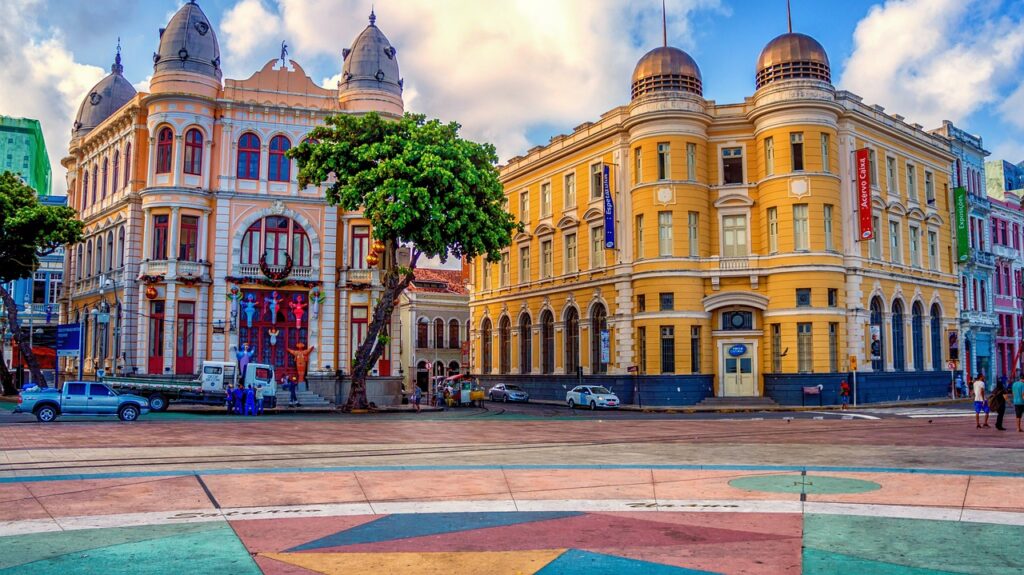I. Brazil’s Rich History
Brazil’s history is a tapestry woven with threads of indigenous cultures, colonial legacies, and a quest for independence. From ancient civilizations to the vibrant present, each era has left its mark on the nation’s identity.
Preserving historic sites is akin to safeguarding chapters of a nation’s story. These sites serve as portals to the past, offering insights into Brazil’s cultural evolution and the forces that shaped its destiny.
II. Indigenous Heritage
Before the arrival of European colonizers, Brazil was home to diverse indigenous cultures with rich traditions and unique ways of life. Exploring their ancient settlements provides a glimpse into the roots of Brazil’s heritage.
Indigenous tribes are the living embodiments of Brazil’s heritage. Their languages, rituals, and customs contribute to the nation’s cultural mosaic. Understanding and respecting their ways is crucial for preserving Brazil’s rich tapestry.
Embarking on a journey to visit indigenous communities allows for meaningful cultural exchanges. These experiences foster understanding, appreciation, and a shared commitment to preserving Brazil’s indigenous heritage.
III. Colonial Era Sites
A. Portuguese Colonial Architecture
The architectural legacy of Portuguese colonization is visible in Brazil’s historic buildings, churches, and cities. Each structure tells a story of the colonial era, reflecting the fusion of European influences with the local environment.
B. Historic Cities and Towns
Brazil boasts charming historic cities like Salvador and Ouro Preto, where cobblestone streets and colonial facades transport visitors to another time. These cities are living testaments to Brazil’s struggle for independence and subsequent cultural flourishing.
C. Preservation of Colonial Heritage
Preserving colonial heritage involves not just conserving physical structures but also nurturing an understanding of the social and cultural contexts. Initiatives for preservation ensure that future generations can connect with and learn from Brazil’s colonial history.
IV. Slavery and Abolition
A. Afro-Brazilian Heritage and Influence
The Afro-Brazilian heritage is a vibrant tapestry interwoven with the nation’s identity. It manifests in music, dance, religion, and daily life, reflecting the resilience and creativity of Afro-Brazilian communities.
B. Slavery and the Abolition Movement
Brazil’s history includes a painful chapter marked by the institution of slavery. Understanding this period and the abolition movement is crucial for grasping the challenges faced by Afro-Brazilians and the nation’s ongoing journey towards equality.
C. Visiting Former Slave Sites
Visiting former slave sites, such as plantations and historic landmarks, provides a somber but necessary reflection on Brazil’s past. These sites serve as memorials, inviting visitors to engage with the history of slavery and its enduring impact.
V. Imperial Brazil
A. The Brazilian Monarchy and Emperor Pedro II
The Brazilian monarchy, led by Emperor Pedro II, played a pivotal role in the nation’s pre-republican history. Exploring the life and times of Pedro II provides insights into the challenges and aspirations of Imperial Brazil.
B. Palaces and Imperial Residences
Palaces and imperial residences, such as the Imperial Palace in Rio de Janeiro, are architectural marvels that stand as symbols of Brazil’s imperial legacy. They offer a glimpse into the opulence and grandeur of the imperial era.
C. Historical Significance of the Monarchy
Understanding the historical significance of the monarchy involves examining its impact on governance, society, and the eventual transition to a republic. This period laid the groundwork for Brazil’s modern political landscape.
VI. Republic and Modern History
A. The Transition to a Republic
The transition to a republic marked a significant shift in Brazil’s political landscape. Examining the events leading to this transition provides insights into the complexities of the nation’s quest for a new form of governance.
B. Key Events in Modern Brazilian History
Modern Brazilian history is marked by key events, including political movements, economic shifts, and cultural transformations. Exploring these events deepens one’s understanding of Brazil’s evolution into a contemporary nation.
C. Museums and Monuments Commemorating the Republic
Museums and monuments dedicated to the republic offer curated narratives of Brazil’s modern history. These institutions house artifacts, documents, and exhibitions that chronicle the nation’s journey through the 20th and 21st centuries.
VII. Cultural and Artistic Heritage
A. Brazilian Literature and Its Iconic Authors
Brazilian literature, shaped by luminaries like Machado de Assis and Clarice Lispector, reflects the nation’s cultural depth. Exploring the works of these authors provides a literary journey through Brazil’s diverse landscapes.
B. Renowned Artists and Their Contributions
From the modernist masterpieces of Tarsila do Amaral to the soul-stirring music of Tom Jobim, Brazil has produced artists whose contributions resonate globally. Appreciating their work enriches one’s understanding of Brazilian culture.
C. Historic Theaters and Cultural Institutions
Historic theaters, like the Teatro Amazonas in Manaus, are cultural gems that showcase Brazil’s love for performing arts. Cultural institutions contribute to the preservation and promotion of Brazil’s artistic heritage.
VIII. Religious and Spiritual Sites
A. Historic Churches, Cathedrals, and Religious Festivals
Brazil’s religious landscape is diverse, with historic churches and cathedrals dotting its cities. Religious festivals, such as Carnival, showcase the syncretism and spiritual richness embedded in Brazilian culture.
B. Syncretism and Religious Diversity in Brazil
Syncretism, the blending of diverse religious traditions, is a hallmark of Brazil’s spiritual identity. Understanding this syncretic nature fosters appreciation for the country’s religious diversity.
C. Pilgrimage Destinations and Spiritual Experiences
Pilgrimage destinations, like the Basilica of Our Lady of Aparecida, draw devotees seeking spiritual solace. These sacred sites offer a glimpse into the deep spiritual connection that shapes Brazil’s cultural fabric.
IX. UNESCO World Heritage Sites
A. Brazil’s UNESCO-Recognized Historic Treasures
Brazil boasts a wealth of UNESCO World Heritage Sites, including the historic center of Salvador and the breathtaking Iguazu National Park. These sites are recognized for their cultural and natural significance.
B. Preservation Efforts and Cultural Significance
Preservation efforts for UNESCO sites involve a delicate balance between safeguarding cultural treasures and promoting sustainable tourism. These sites play a crucial role in maintaining Brazil’s cultural and ecological integrity.
C. Visiting and Exploring These Sites
Visiting UNESCO World Heritage Sites provides an immersive experience into Brazil’s history and natural beauty. These journeys offer an opportunity to witness firsthand the efforts to preserve and share Brazil’s cultural legacy.
X. Architectural Marvels
A. Iconic Buildings and Architectural Landmarks
Brazil’s architectural marvels, from the futuristic Brasília to the historic Ouro Preto, are testaments to human creativity and ingenuity. Exploring these landmarks offers a visual journey through Brazil’s architectural heritage.
B. Historical Significance and Preservation Challenges
Understanding the historical significance of architectural marvels involves delving into the stories embedded in their structures. Preservation challenges highlight the need for sustainable practices to protect these landmarks for future generations.
C. Exploring Brazil’s Architectural Heritage
Embarking on a journey to explore Brazil’s architectural heritage is a voyage through time. Whether wandering through colonial streets or marveling at modernist masterpieces, each architectural gem has a tale to tell.
XI. Commemorative Sites and Museums
A. Memorials and Museums Dedicated to Specific Historical Events
Commemorative sites and museums, like the Museu do Amanhã in Rio de Janeiro, focus on specific historical events. These institutions serve as educational hubs, fostering a deeper understanding of pivotal moments in Brazil’s history.
B. Collections of Artifacts and Historical Documents
Museums housing artifacts and historical documents curate tangible links to the past. Exploring these collections provides a tactile connection to the narratives that have shaped Brazil’s trajectory.
C. The Role of Commemorative Sites in Preserving History
Commemorative sites play a vital role in preserving history by providing spaces for reflection, education, and remembrance. Their significance extends beyond mere monuments, contributing to the ongoing dialogue about Brazil’s collective memory.
XII. Connecting with Brazil’s Past
Brazil’s past is a mosaic of cultures, struggles, and triumphs that have shaped its present. Embracing this diversity fosters a profound connection with the nation’s rich heritage.
Exploration is the key to unlocking the treasures of Brazil’s history. Encouraging readers to embark on journeys of discovery ensures that the nation’s cultural legacy continues to be celebrated and preserved.



